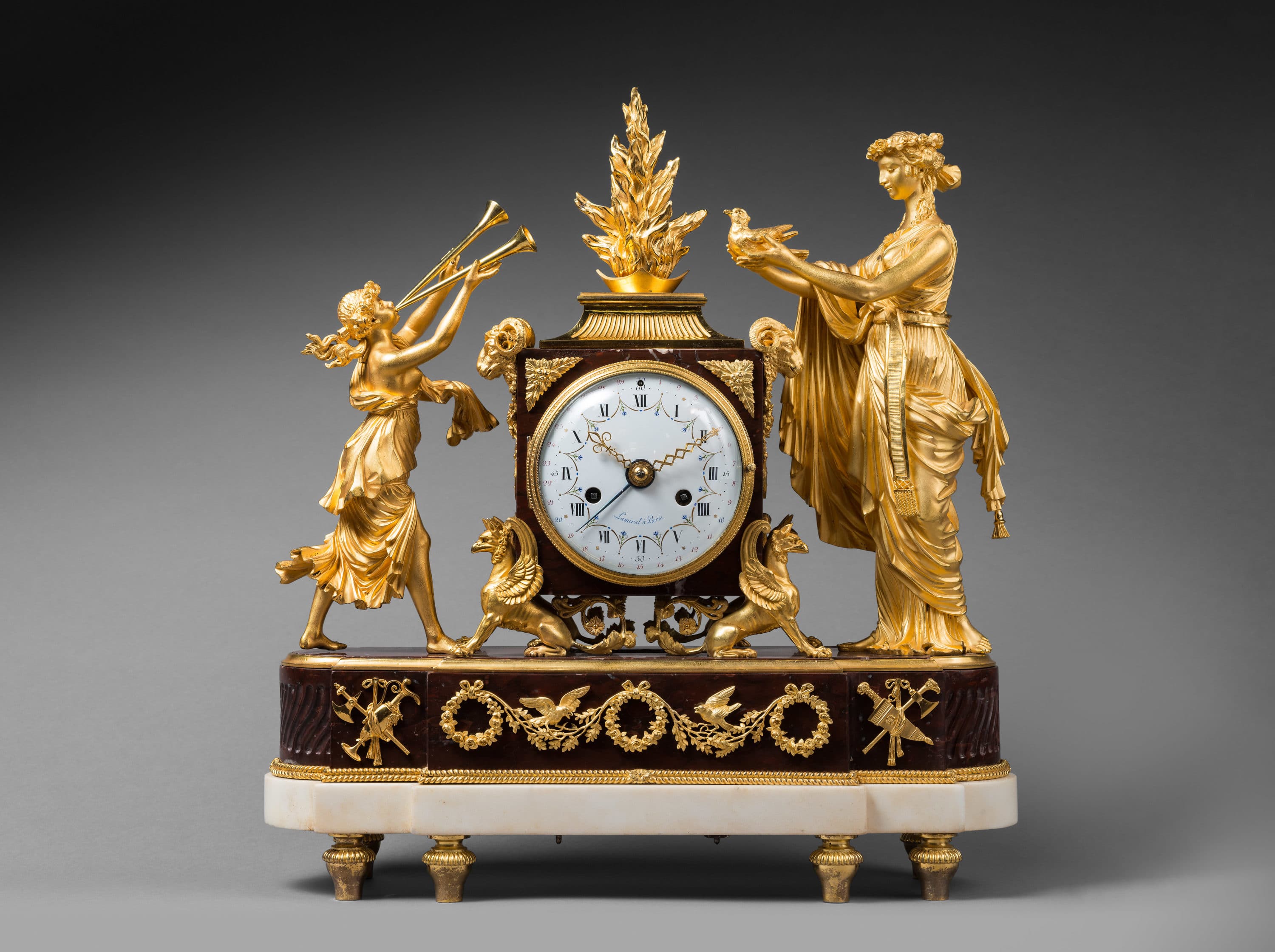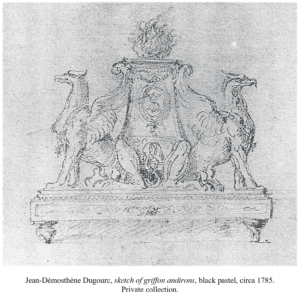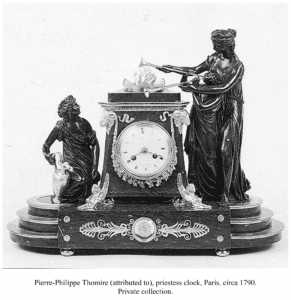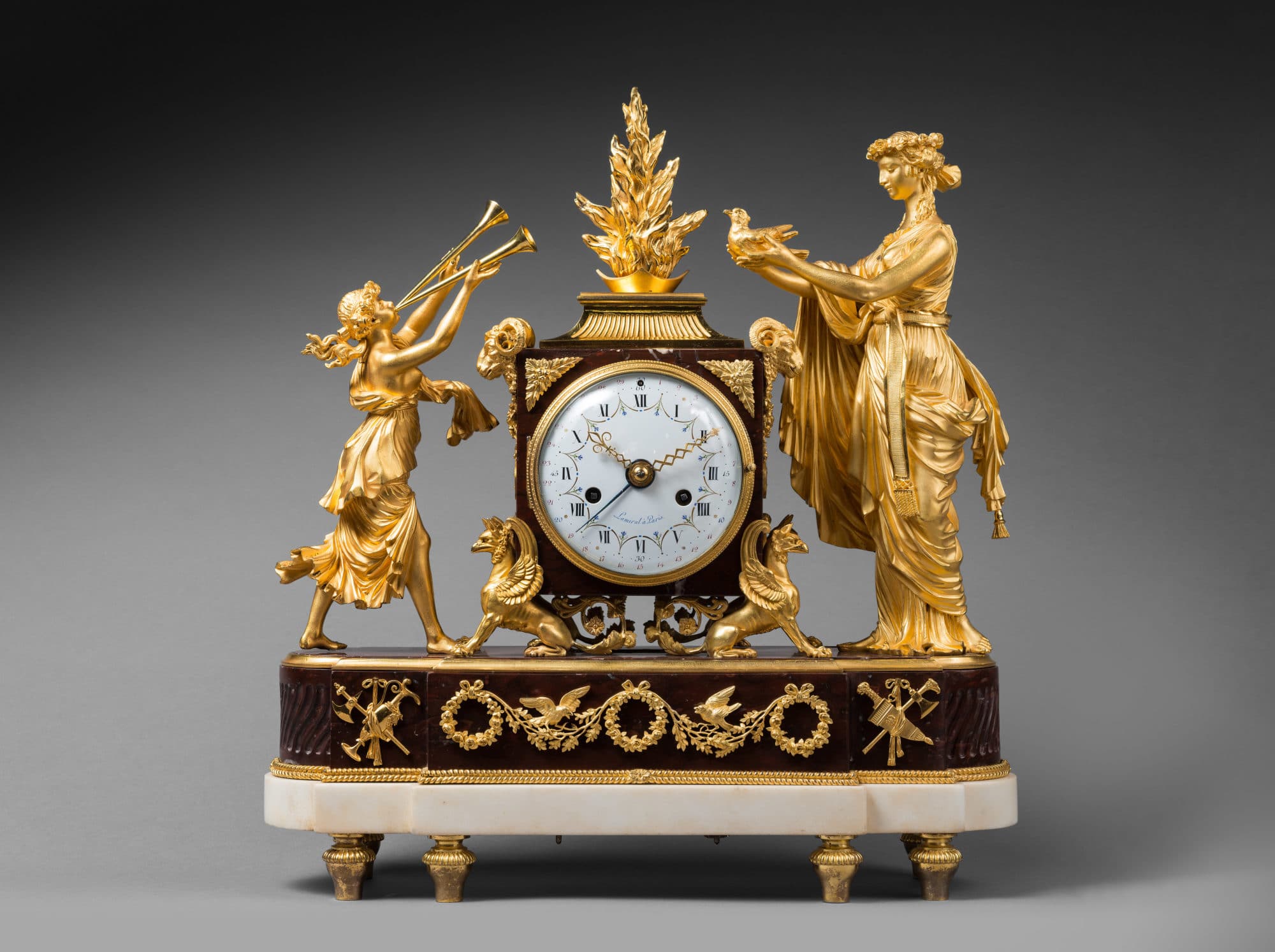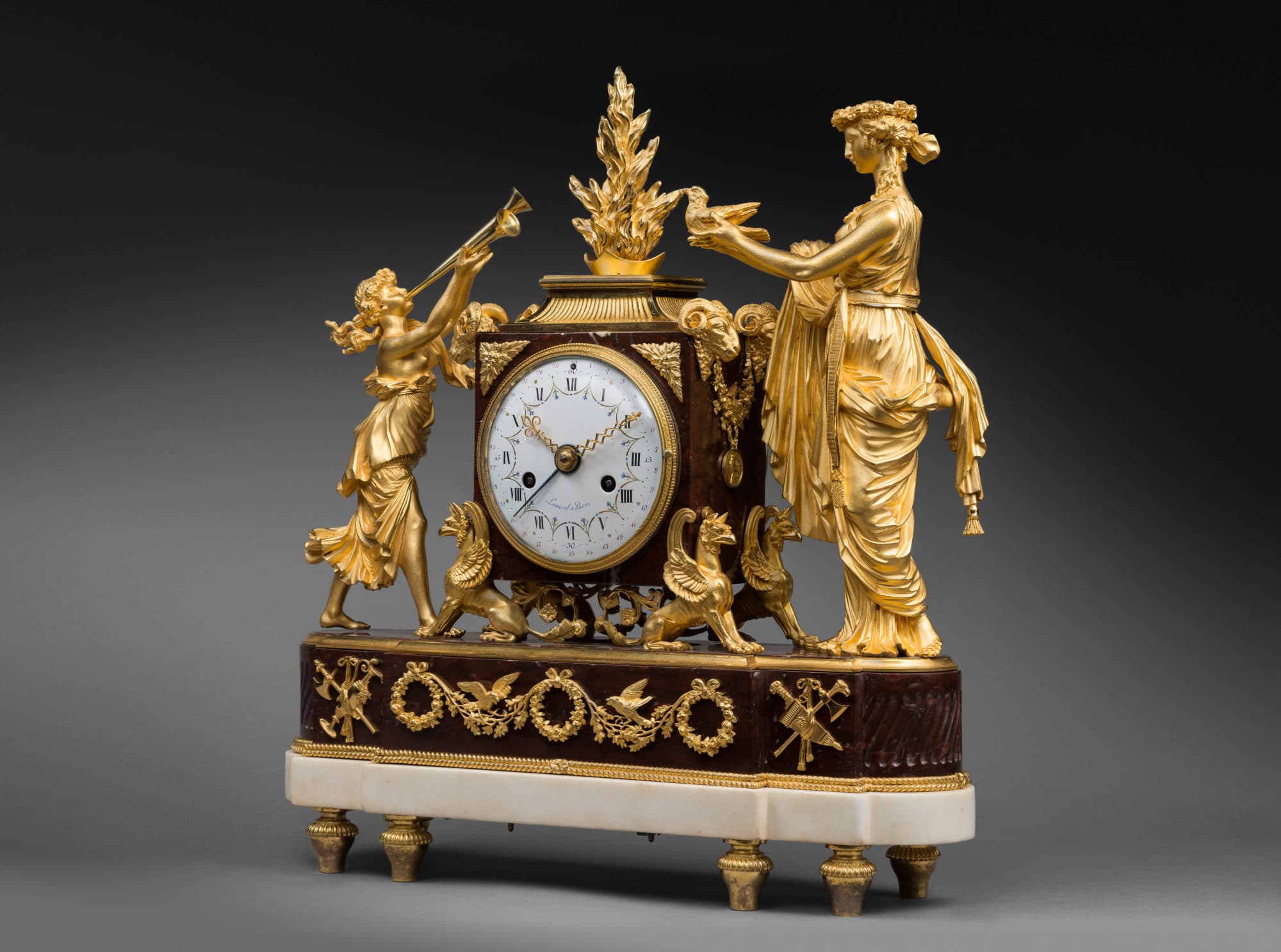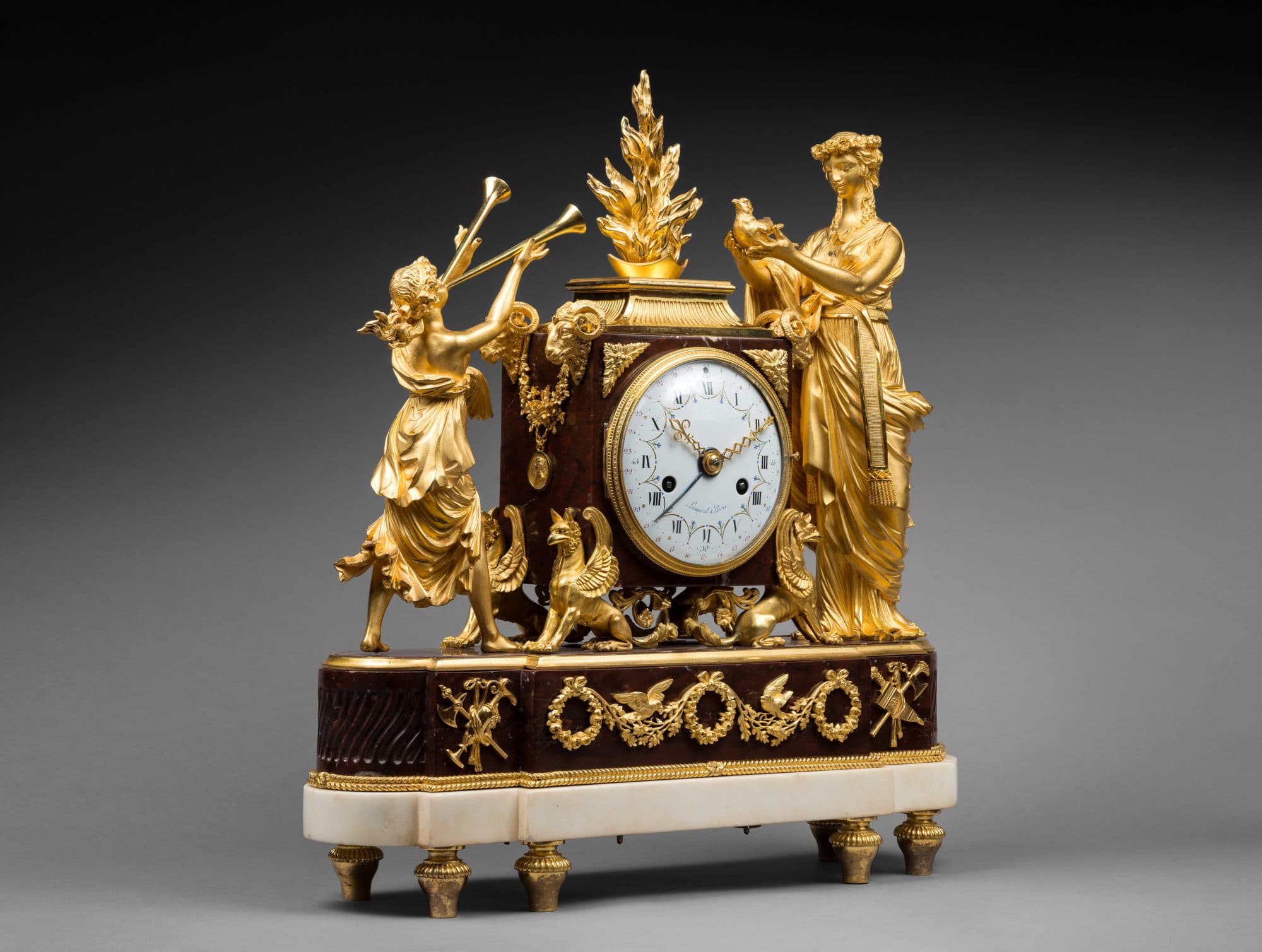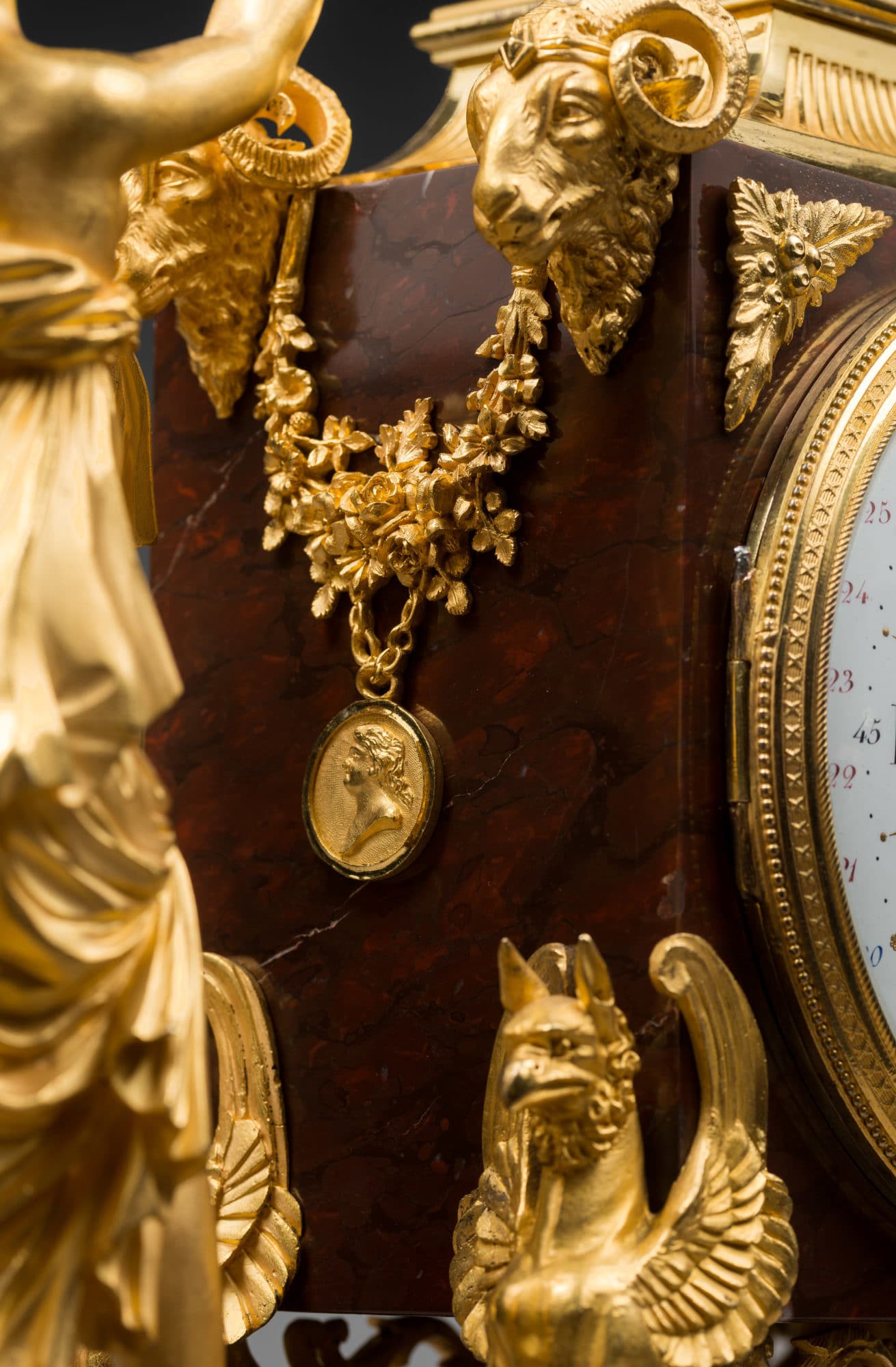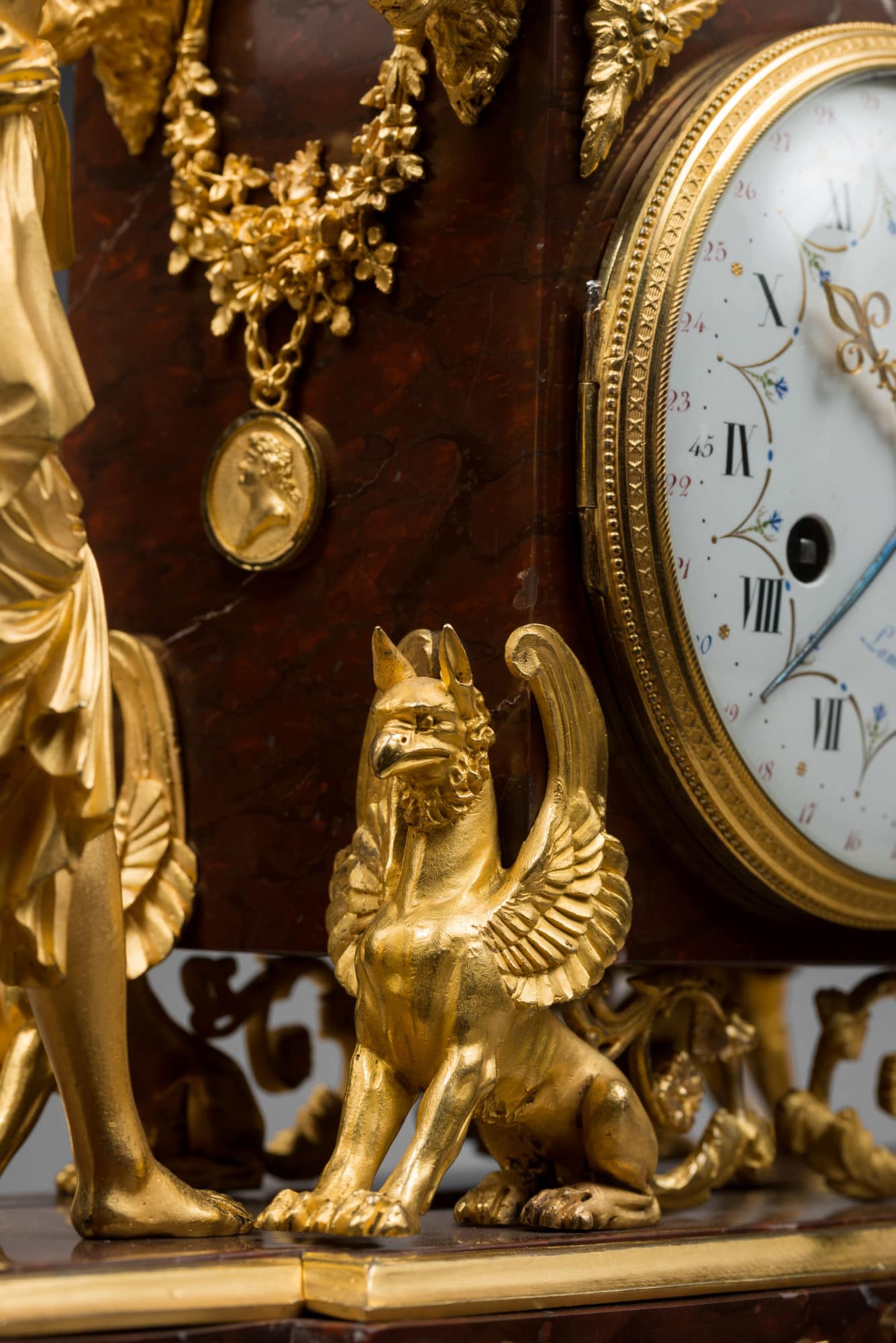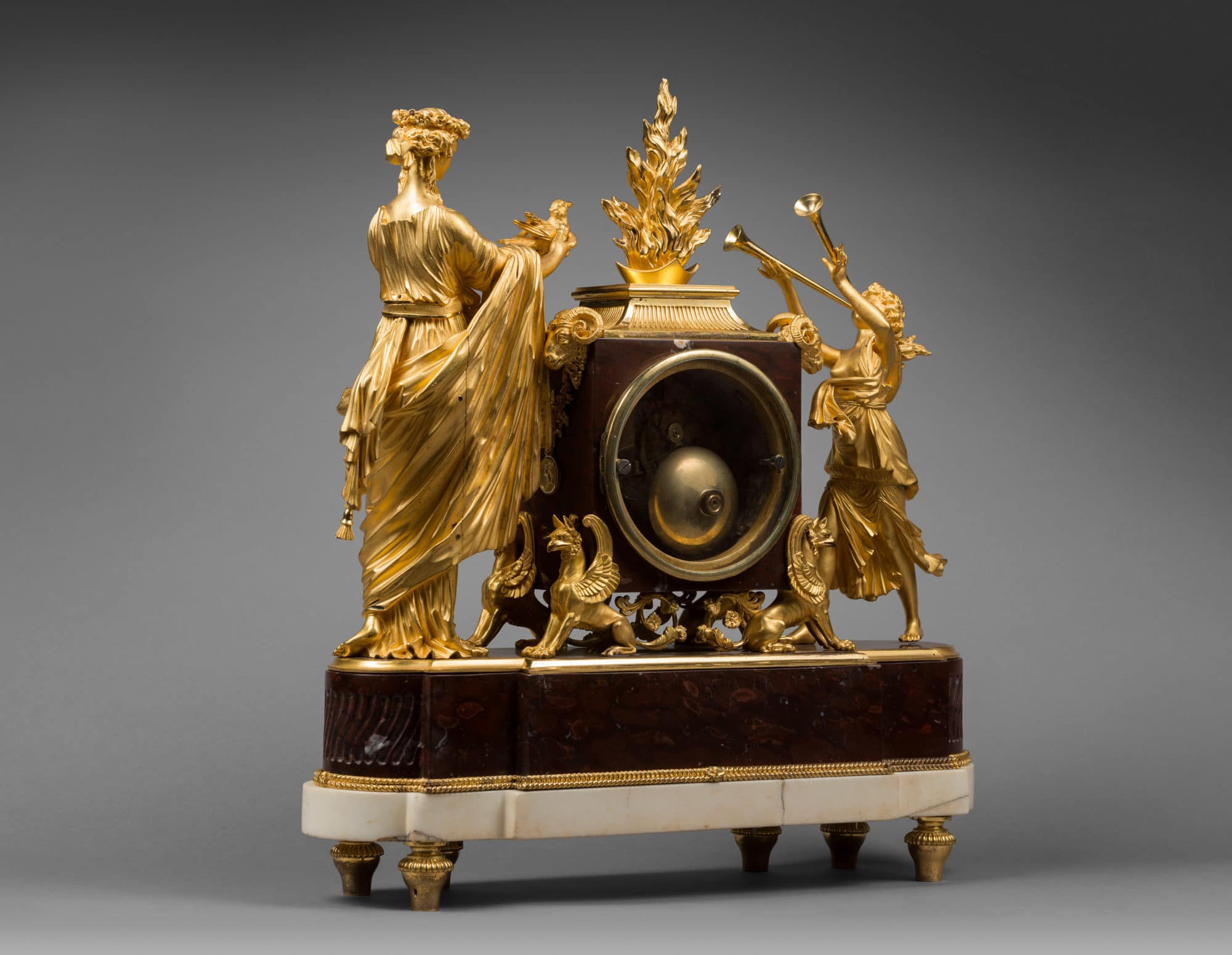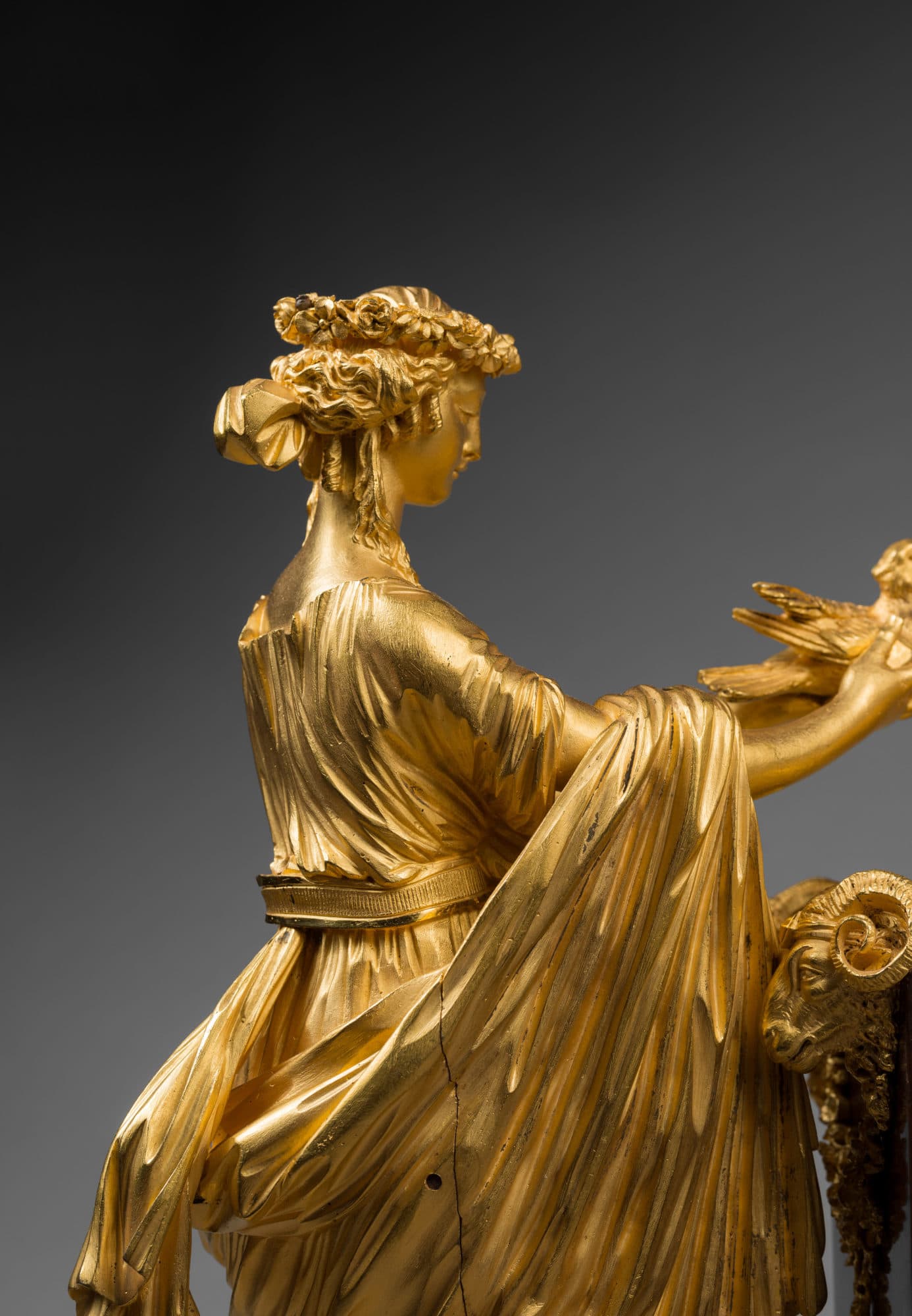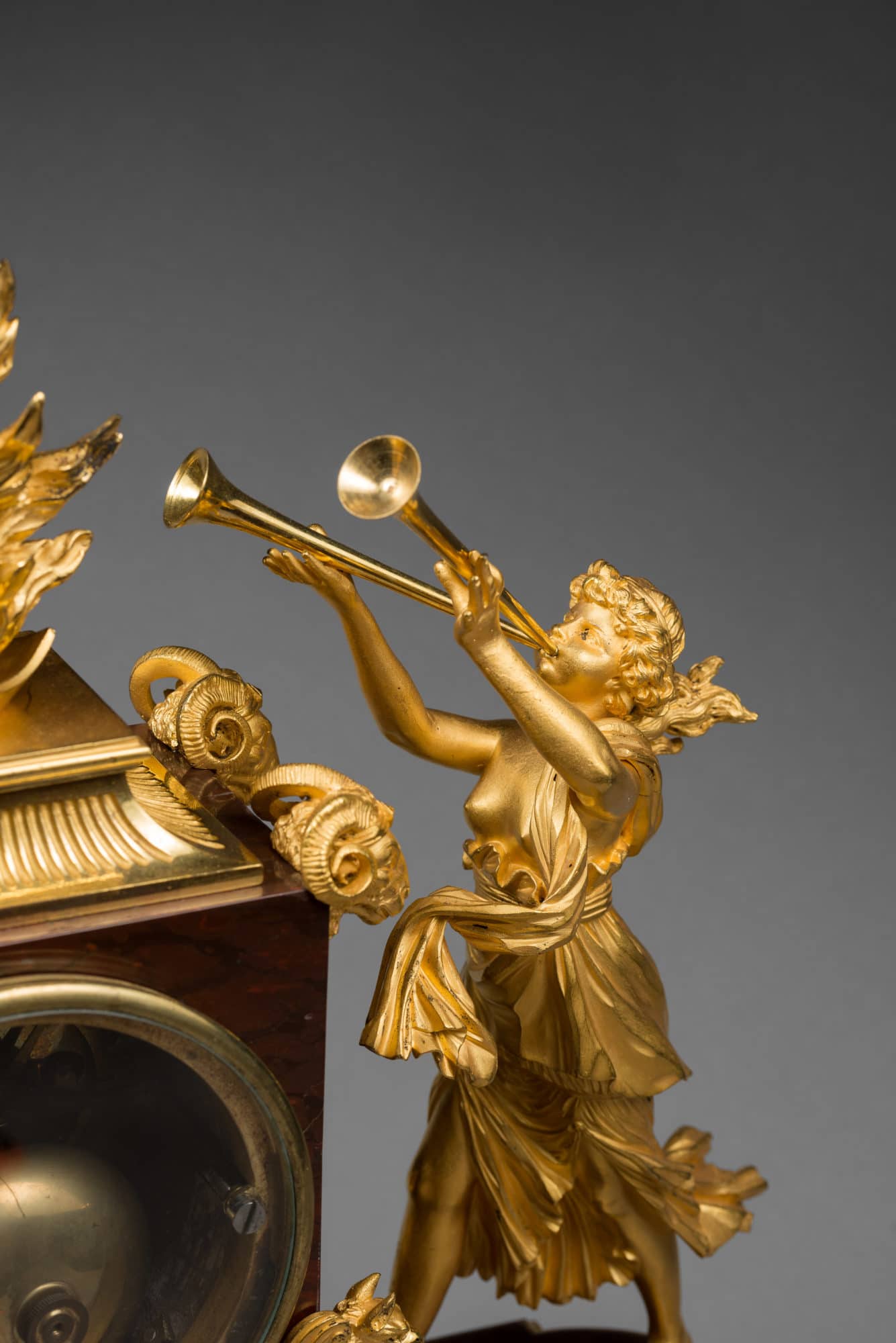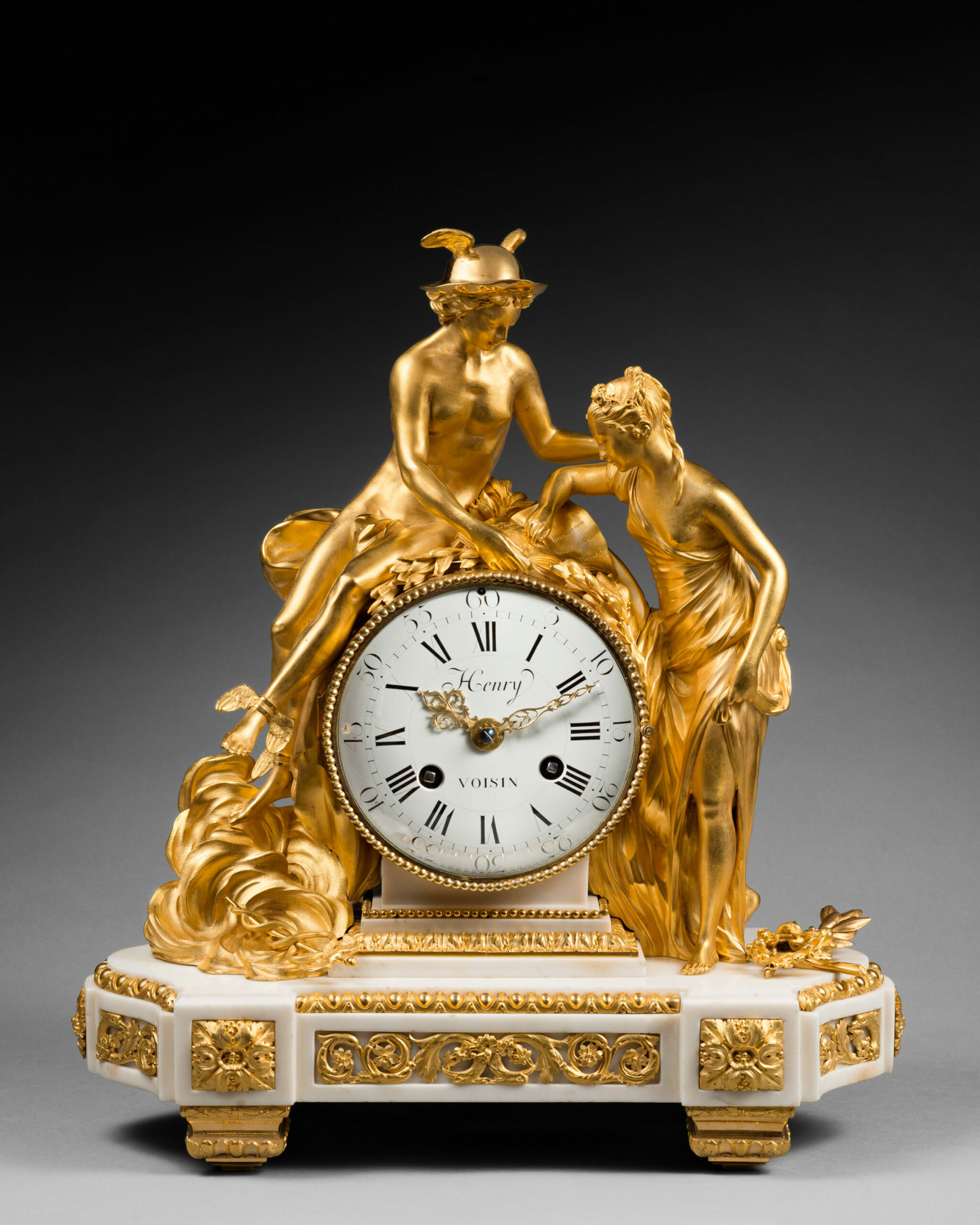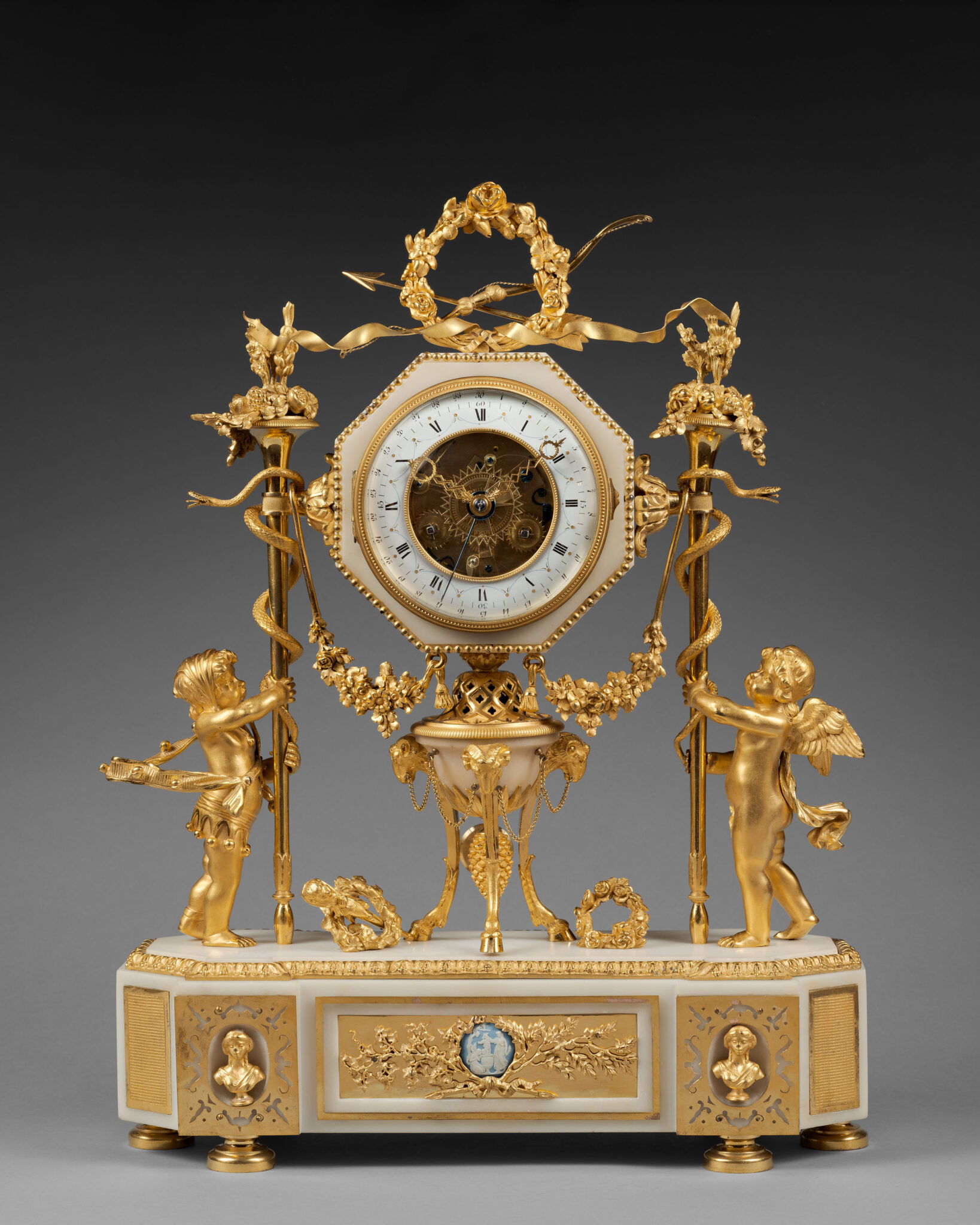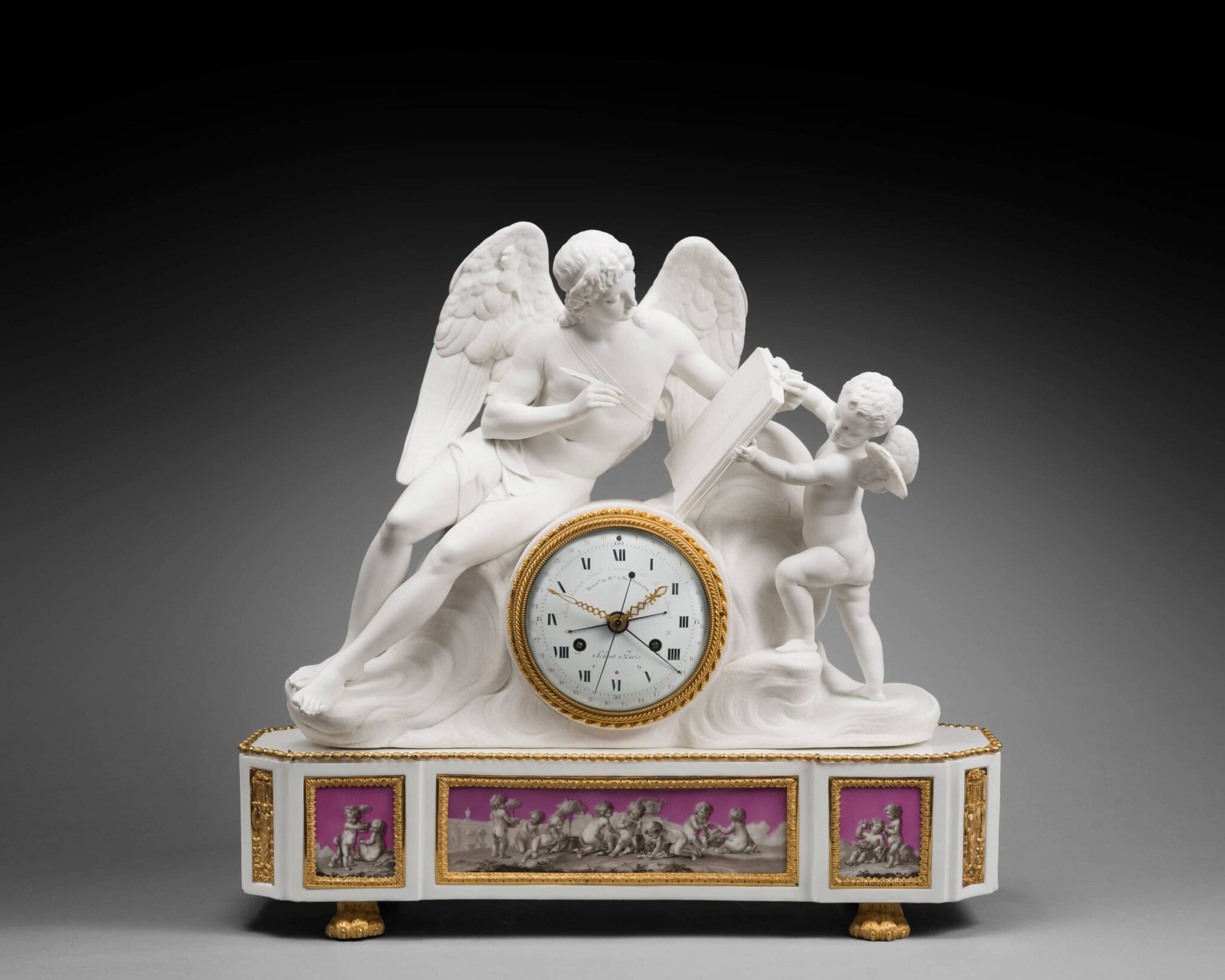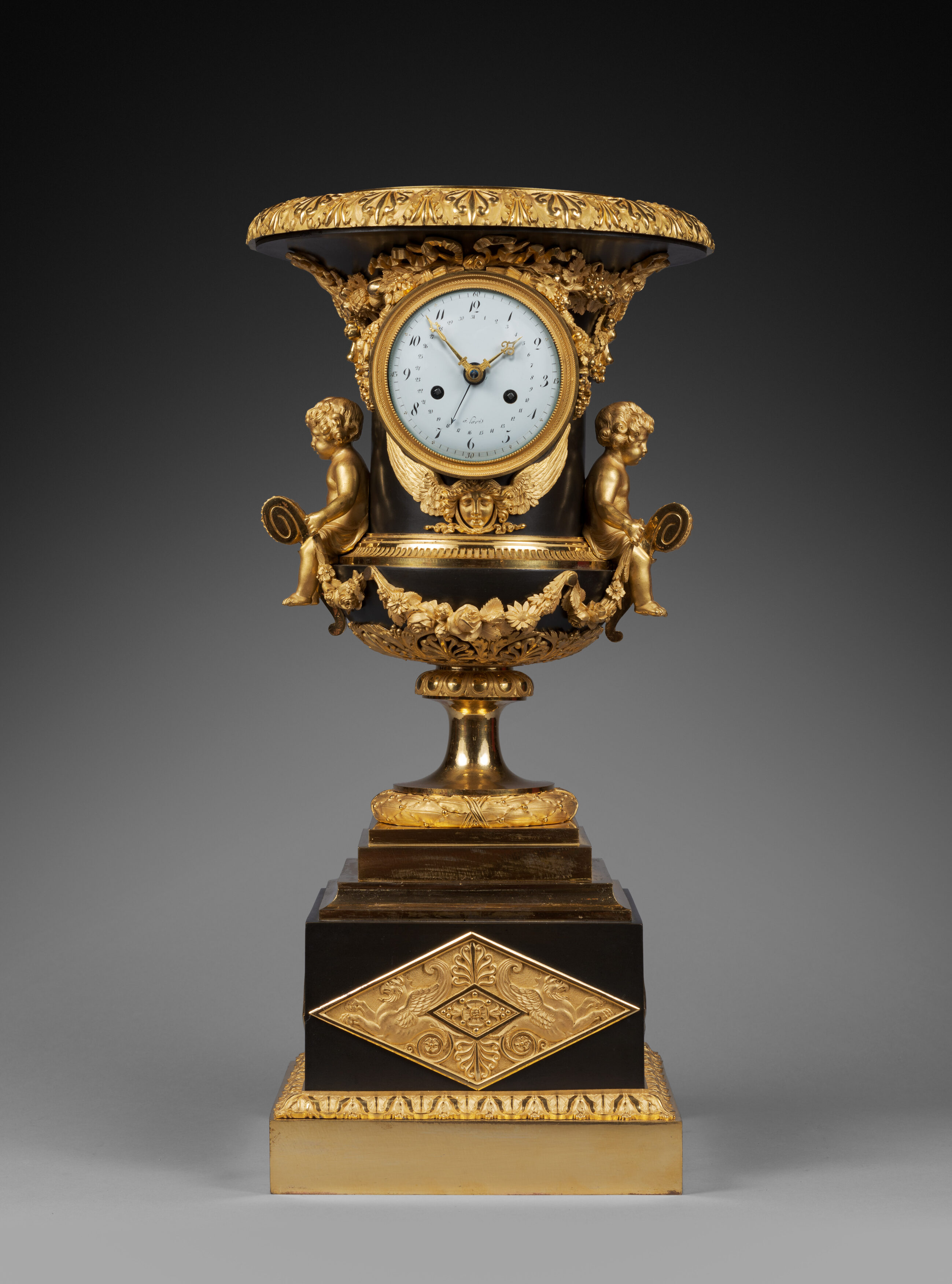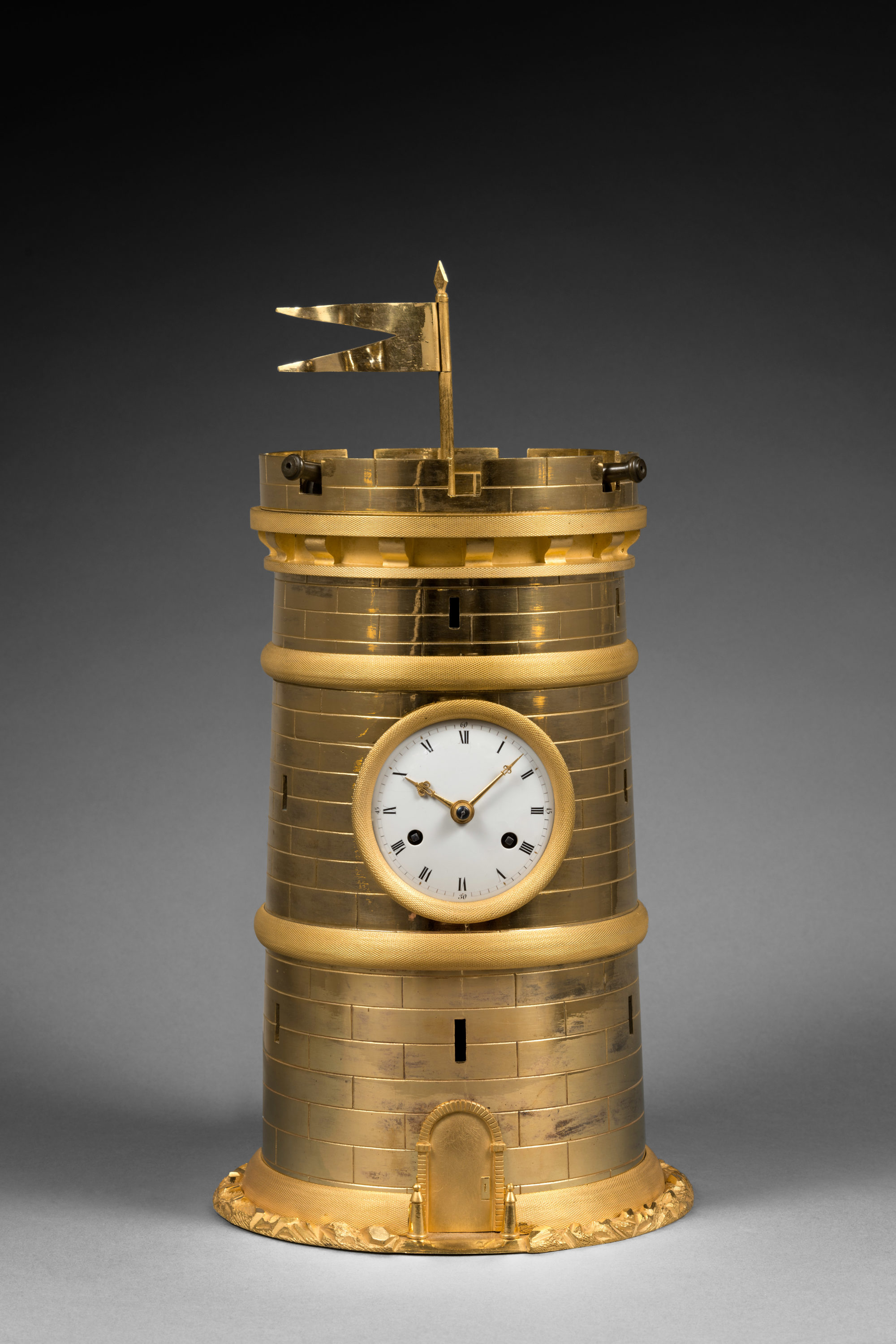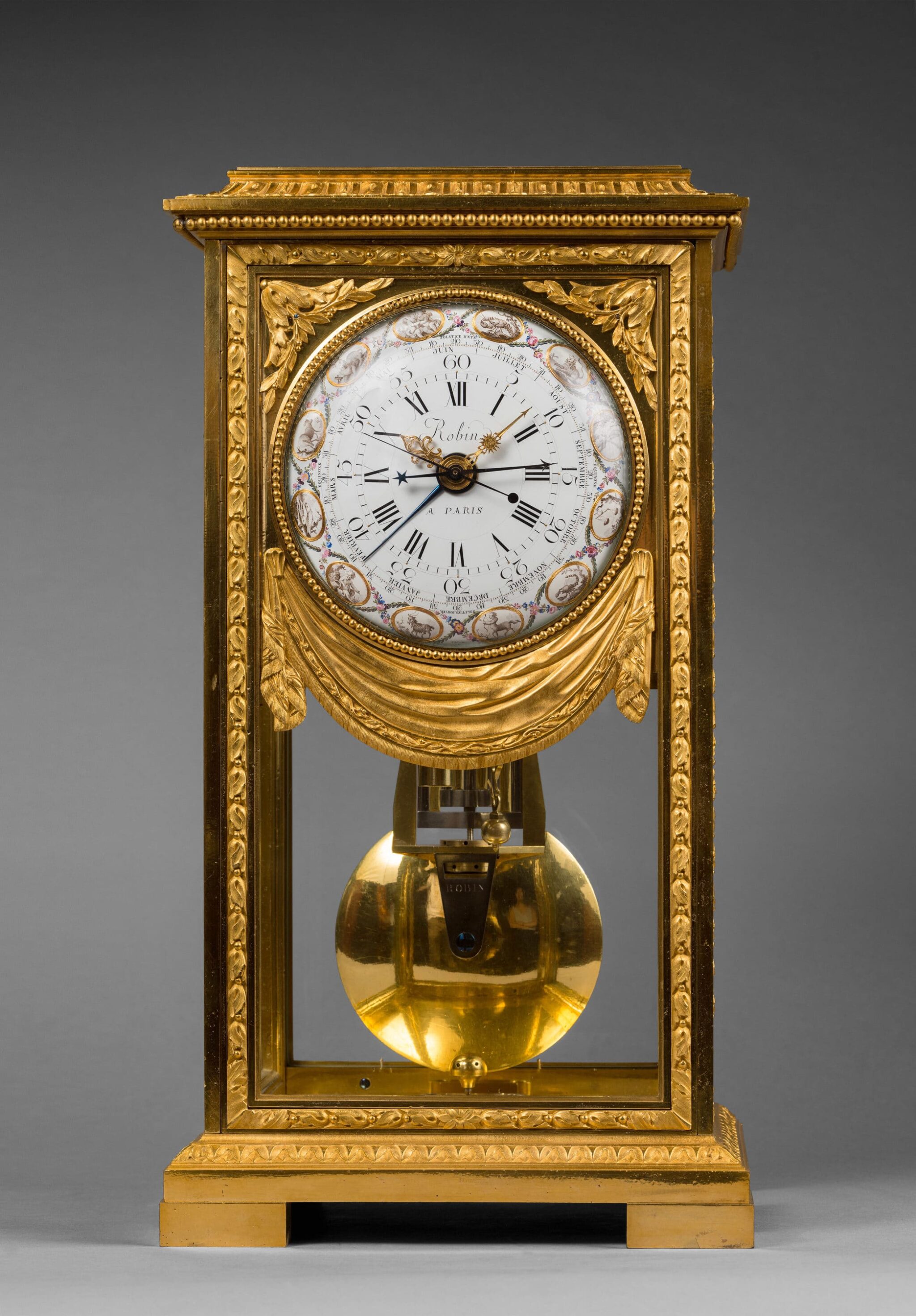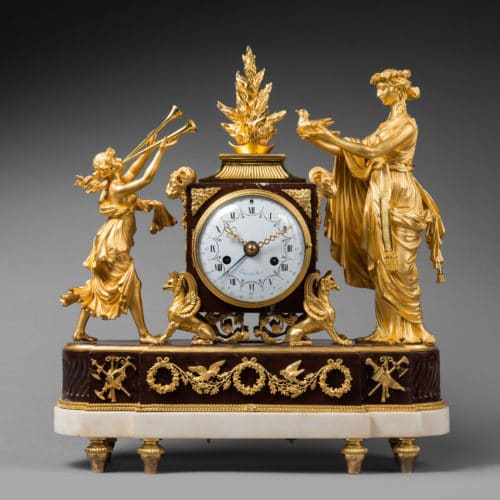Rare Gilt Bronze and Rouge Griotte Marble Mantel Clock
“The Sacrifice to Love”
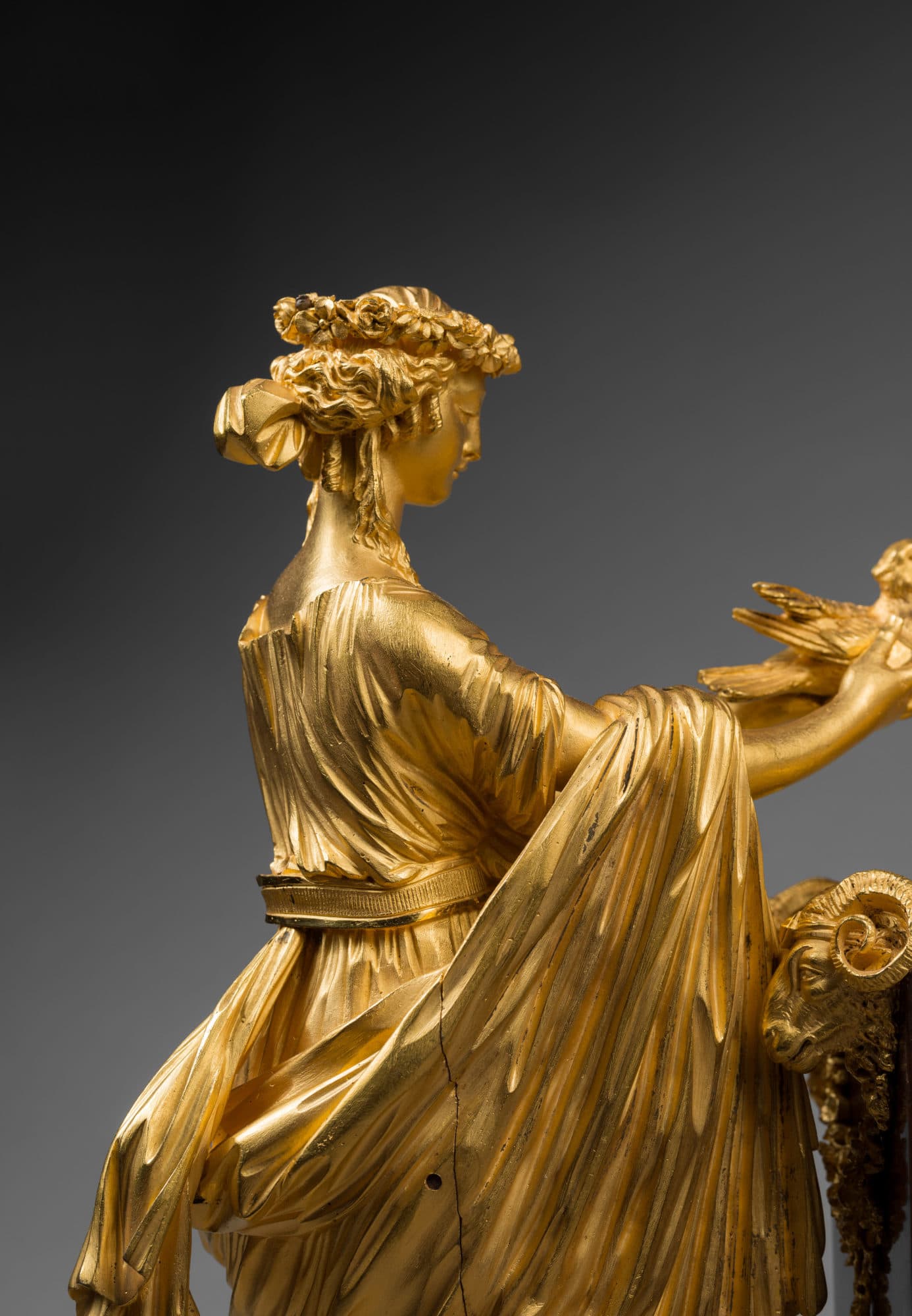
“Lamiral”
Enamel Dial by Joseph Coteau (1740-1812)
Case Attributed to Pierre-Philippe Thomire (1751-1843)
Paris, late Louis XVI period, circa 1790
The round enamel dial, adorned with polychrome motifs, is signed “Lamiral à Paris”; it indicates the hours in Roman numerals and the fifteen-minute intervals in Arabic numerals, by means of two pierced gilt bronze hands. The date is indicated by a blued steel hand. The superb case is of finely chased gilt bronze and Italian red griotte marble. The movement is housed in a case modelled as an antique temple, supported by four griffons and adorned with ram’s heads in the upper corners. Surmounting the clock, a flaming brazier rests upon a moulded terrace decorated with a finely fluted motif. On either side of the altar stand two priestesses in long antique palla; one, with outstretched hands, is playing the trumpet; the other holds a bird in her hands as she prepares to offer it as a sacrifice. The whole rests upon a red griotte Italian marble base with diagonally fluted sides; it is richly ornamented with chased gilt bronze mounts, trophies of arms and ewers and three beribboned flower wreaths linked by bird-inhabited branches. The base rests upon a white statuary marble plinth and is raised upon eight finely gadrooned toupie feet.
Discover our entire collection of antique mantel clocks for sale online or at the gallery.
La Pendulerie is the specialist in fine and rare antique clocks, based in Paris.
The unusual design of this clock, and in particular the flaming altar supported by griffons, is inspired by preparatory drawings done by several Parisian designers of the late 18th century, and notably a drawing by Jean-Démosthène Dugourc (1749-1825) representing a plan for andirons in the form of griffons with a flaming altar. The piece was intended for the Count de Provence, brother of Louis XVI (sold in Paris, Me Renaud, Hôtel Drouot, June 3, 1988, lot 85).
The rarity of the model and the quality of its chasing and gilding allow it to be attributed to Pierre-Philippe Thomire. Thomire created several other clocks based on the theme—quite rare—of priestesses or vestals. Among these, one example was delivered by Robin in 1788 to Marie-Antoinette’s Cabinet des Bains in the Tuileries Palace; it is today in the Paris Musée des Arts décoratifs (illustrated in P. Verlet, Les bronzes dorés français du XVIIIe siècle, Paris, 1999, p. 326); a second example is illustrated in P. Kjellberg, Encyclopédie de la pendule française du Moyen Age au XXe siècle, Paris, 1997, p. 336.
Pierre-Philippe Thomire (1751 - 1843)
Pierre-Philippe Thomire was the most important Parisian bronzier of the last quarter of the 18th century and the first decades of the following century. Early on in his career he worked for Pierre Gouthière, ciseleur-fondeur du roi, and toward the mid-1770’s began working with Louis Prieur. He later became one of the bronziers attached to the Manufacture Royale de Sèvres, creating the bronze mounts for most of the important creations of the day. After the Revolution, he purchased the stock of Martin-Eloi Lignereux, thus becoming the most important suppliers of furniture bronzes for châteaux and Imperial Palaces. In addition, he worked for a wealthy private clientele, both French and foreign, including several of Napoleon’s Marshals. Thomire retired in 1823.
Joseph Coteau (1740 - 1801)
The most renowned enameller of his time, he worked with most of the best contemporary Parisian clockmakers. He was born in Geneva, where he was named master painter-enameler of the Académie de Saint Luc in 1766. Several years later he settled in Paris, and from 1772 to the end of his life, he was recorded in the rue Poupée. Coteau is known for a technique of relief enamel painting, which he perfected along with Parpette and which was used for certain Sèvres porcelain pieces, as well as for the dials of very fine clocks. Among the pieces that feature this distinctive décor are a covered bowl and tray in the Sèvres Musée national de la Céramique (Inv. SCC2011-4-2); a pair of “cannelés à guirlandes” vases in the Louvre Museum in Paris (see the exhibition catalogue Un défi au goût, 50 ans de création à la manufacture royale de Sèvres (1740-1793), Musée du Louvre, Paris, 1997, p. 108, catalogue n° 61); and a ewer and the “Comtesse du Nord” tray and bowl in the Pavlovsk Palace in Saint Petersburg (see M. Brunet and T. Préaud, Sèvres, Des origines à nos jours, Office du Livre, Fribourg, 1978, p. 207, fig. 250). A blue Sèvres porcelain lyre clock by Courieult, whose dial is signed “Coteau” and is dated “1785”, is in the Musée national du château in Versailles; it appears to be identical to the example mentioned in the 1787 inventory of Louis XVI’s apartments in Versailles (see Y. Gay and A. Lemaire, “Les pendules lyre”, in Bulletin de l’Association nationale des collectionneurs et amateurs d’Horlogerie ancienne, autumn 1993, n° 68, p. 32C).
